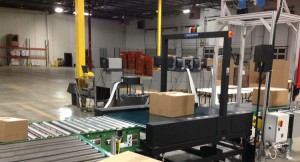Image via Telecoms
Helping protect the planet is everyone’s responsibility. After all, it’s not as if we can just pack up our stuff and relocate to Mars. But while many conservation attempts focus on the impact of the individual, the effect that companies and businesses have on the environment is often overlooked. In fact, in a study performed by the London-based firm Trucost back in 2010, it was estimated that the 3,000 largest public companies in the world cause an estimated $2.2 trillion in environmental damage every year. That’s too bad, because when an organization decides to go green, it can make a real difference in the world. Not only that, but it can also end up saving substantial amounts of money. Here are a few ways that your business can save cash while saving the planet.
1. Replace conventional and fluorescent lighting with LED bulbs

If everyone in America were to replace their inefficient incandescent bulbs with energy efficient versions, as a country we’d be able to save approximately $9 billion annually in energy costs. How is that possible? Well, conventional lighting is a huge energy waster. In fact, incandescent bulbs only use about 20% of their energy for creating visible light—the rest is wasted as heat.
At the same time, most won’t last longer than a few years before burning out. Fluorescent bulbs last a little bit longer, but they contain poisonous gases and chemicals, and the light they produce has been known to irritate certain people.
However, new LED bulbs are 80% energy efficient, contain no harmful substances, and can last practically forever (LEDs don’t burn out the way conventional bulbs do, thus a single bulb can last for as long as 50,000 hours of constant use). So, replacing your bulbs with LEDs will reduce energy consumption, reduce waste, and save you some money in the process. (Image source www.ccrane.com)
2. Cut down on paper products
We live in a digital age. However, despite this fact, many companies are still printing out tons of paper memos, faxes, notices, etc., every year. In fact, the average office worker uses 10,000 sheets of copy paper annually. Cut back on paper waste by relying on digital communication within the office. For important records and files, invest in some high quality document management software and store backups in secure, off-site locations. As for incoming paper, such as bills, contact the sender and see if you can be placed on a paperless program and handle all of your payments online (with advertisements and junk mail, it may take some time, but you should be able to make some calls and get your company removed from any mailing lists). Cutting back on paper use can save your business hundreds of thousands of dollars every year because paper costs money not only when it’s purchased, but also when it is stored, printed upon, mailed, thrown away, and recycled.
3. Use automated systems in your warehouse
 If you want to cut down on the environmental impact of your distribution process, while also saving money at the same time, then an automated warehouse is the way to go.
If you want to cut down on the environmental impact of your distribution process, while also saving money at the same time, then an automated warehouse is the way to go.
Automated warehouses use up to 40% less land than conventional warehouses, meaning a less impactful presence to the surrounding ecosystem. They also consume less energy, produce less waste, and cost far less to maintain.
If your company utilizes warehouse distribution or even storage, looking into switching over to automation can really pay off. (Image source www.qmiservices.net)
4. Use alternative energy
Electricity produced in power-plants isn’t generally very green. 44% of the electricity in the United States is created in coal-burning plants, which have a massively negative impact on the world’s air quality. At the same time, they produce toxic chemical waste and rely on harmful mining practices to acquire necessary fuel. However, it’s possible to free your company from the strangling grip of conventional power. By switching to alternative energy sources such as solar power, you can enjoy limitless clean energy at no cost to the environment. Investing in solar power for your company makes sense environmentally, and can also save you 10–18% on your annual costs. Add to that the fact that the government is seeking to promote solar use and is willing to offer incentives such as tax credits to organizations that make use of it.
5. Allow telecommunication
When employees have to commute to work, they generally use a personal automobile and don’t carpool. This has a devastating impact on the environment in that it releases greenhouse gases into the air and wastes precious fuel. Once at the office, workers use energy in the form of lighting, climate control, and computer use. You can cut back on all of these costs by simply allowing employees to telecommute. Less energy is consumed when working at home, and by removing the commute, you’re also cutting back on air pollution. See? Sometimes going green can also mean saving green, so let’s get started!
